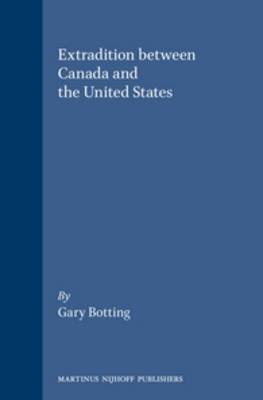International & Comparative Criminal Law
1 primary work
Book 17
The tumultuous relationship between the United States and Canada's extradition systems, their histories, and all of the issues, conflicts and controversies are here in this richly detailed, colorful text. The book is especially valuable today given the global response to the events of September 11, 2001 and the United States' war on terrorism, which has had a dramatic impact on the way Canada and the U.S. conduct extradition procedures between one and other.
The author examines the most crucial extradition cases from the 19th to the 21st century, including cases arising out of World War II, the civil rights era, and recent terrorist activities. Amongst the highlights are detailed analysis of:
* Attitudes towards extradition in North America from initial reluctance to extradite to the negotiation of the Jay Treaty (1794), which had a rudimentary extradition provision;
* The period of the greatest development of extradition law, which occurred at the beginning of the twentieth century;
* The consolidation of extradition procedure towards a period of assertion of pre-eminent executive discretion, a "devolution" characterized by an eventual breakdown in cooperation between Canada and the United States in extradition matters after the Second World War;
* The extent to which extradition dried up until 1971, when a new extradition treaty between Canada and the United States was negotiated, along with innovative procedures for improving cooperation in handling extradition requests on both sides of the border;
* The Treaty of Extradition Between the Government of Canada and the Government of the United States ratified in 1976, as amended in 1988 and 2003, which provides rules governing seizure and sufficiency of evidence, arrest, and provisional arrest; encourages mutual cooperation between the executive authorities of the two nations; and in theory at least provides a modicum of protection for individuals caught up in extradition proceedings.
Current legislative scheme in Canada's Extradition Act (1999), showing the ways in which executive discretion has been expanded and judicial discretion diminished in virtually every level.
The shifting sands of extradition law from the perspective of the twenty-first century, including the ramifications of extraditing alleged terrorists to face justice in a shaken and bestirred America.
This work will be valuable for anyone working on the myriad extradition cases now existing between the United States and Canada or for those interested in acquiring an understanding of certain historical differences between these North American neighbors.
Published under the Transnational Publishers imprint.
The author examines the most crucial extradition cases from the 19th to the 21st century, including cases arising out of World War II, the civil rights era, and recent terrorist activities. Amongst the highlights are detailed analysis of:
* Attitudes towards extradition in North America from initial reluctance to extradite to the negotiation of the Jay Treaty (1794), which had a rudimentary extradition provision;
* The period of the greatest development of extradition law, which occurred at the beginning of the twentieth century;
* The consolidation of extradition procedure towards a period of assertion of pre-eminent executive discretion, a "devolution" characterized by an eventual breakdown in cooperation between Canada and the United States in extradition matters after the Second World War;
* The extent to which extradition dried up until 1971, when a new extradition treaty between Canada and the United States was negotiated, along with innovative procedures for improving cooperation in handling extradition requests on both sides of the border;
* The Treaty of Extradition Between the Government of Canada and the Government of the United States ratified in 1976, as amended in 1988 and 2003, which provides rules governing seizure and sufficiency of evidence, arrest, and provisional arrest; encourages mutual cooperation between the executive authorities of the two nations; and in theory at least provides a modicum of protection for individuals caught up in extradition proceedings.
Current legislative scheme in Canada's Extradition Act (1999), showing the ways in which executive discretion has been expanded and judicial discretion diminished in virtually every level.
The shifting sands of extradition law from the perspective of the twenty-first century, including the ramifications of extraditing alleged terrorists to face justice in a shaken and bestirred America.
This work will be valuable for anyone working on the myriad extradition cases now existing between the United States and Canada or for those interested in acquiring an understanding of certain historical differences between these North American neighbors.
Published under the Transnational Publishers imprint.
